Hydrangeas are among the most sought-after outdoor plants for enhancing a home’s exterior or bringing lovely blossoms into a backyard. Hydrangeas make a striking arrangement with their enormous blooms, which come in a variety of colours, including purple, magenta, and ivory.
These twelve exquisite hydrangea varieties are ones you may not be acquainted with, but you will be happy you included them in your garden this year.
1. Bluebird
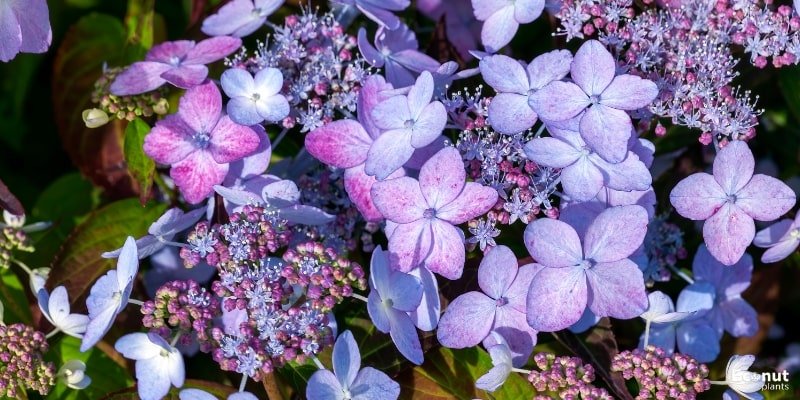
“Bluebird” is an additional remarkable lace-cap hydrangea. This shrub is distinctive in that it has a two-toned appearance because of the enormous clump of deeper blue fertile flowers surrounded by light blue florets. This shrub can reach heights and widths of four feet when it grows in a mounded form.
The flowers are beautifully framed by the dark green foliage. The autumn foliage will intensify in colour, prolonging the season of fascination. As ‘Bluebird’ blooms all summer long, it’s a lovely hydrangea to use as an accent plant or as a border. “Bluebird” is hardy in zones 6–9 and enjoys some shade.
2. Nikko Blue

This is a very lovely choice for a blue-flowering shrub. It loves a little shade. It has an abundance of flowers during the early summer. “Nikko Blue,” when it reaches six feet in height, will offer sufficient seclusion to be used as a screen or planted next to a wall or fence. Pruning should be done carefully because it blooms on aged wood.
Old wood bloomers don’t usually require much pruning, but if you do need to remove any growth to keep the plant in its desired form or size, it’s best to do it in August or September, soon after the summer blooms. If you prune your hydrangea after September, it will not bloom the next year.
3. General Vicomtesse DeVibraye
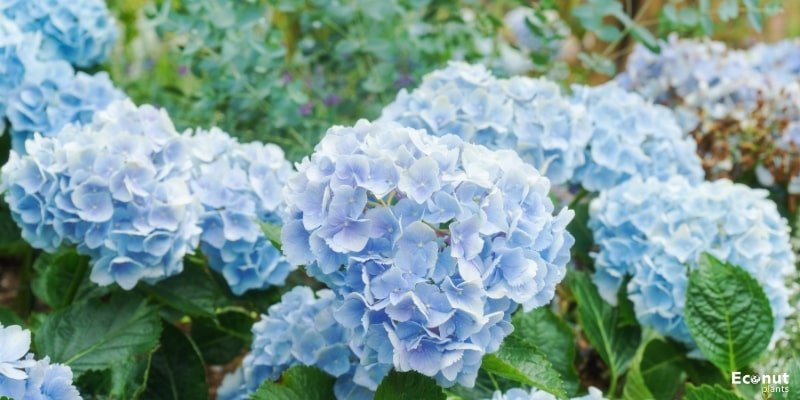
This French beauty is stunning. Covering this mounded plant, these flowers come in a pastel blue. I adore them in a hedge, but the uses are truly unlimited, as with most mounded hydrangeas. A long row of enormous flowers has a way of making you want to swoon.
This plant prefers early light and afternoon shade, and it can reach a height of four to six feet. It has lovely, robust green leaves. This cut flower is absolutely lovely. The “General,” which blooms from summer to fall, is hardy in zones 6–9.
4. Big Daddy
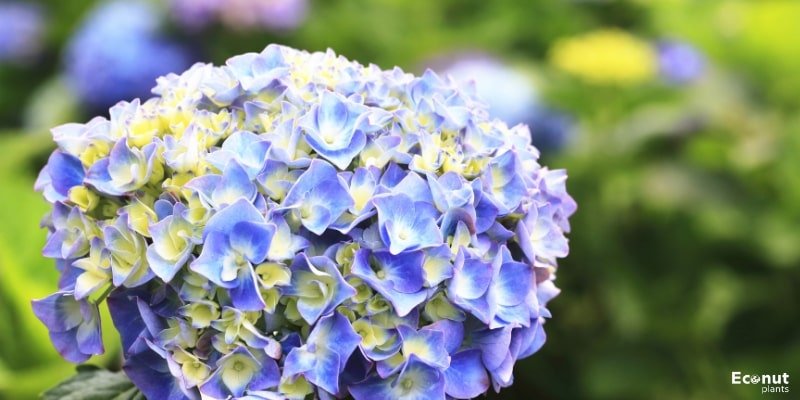
This shrub bears enormous, up to 14-inch-wide, sky-blue blooms. This mophead-covered plant needs full to partial shade to avoid drying out. “Big Daddy” has summer-to-fall blooms, and its glossy, deep green foliage holds up beautifully even after a frost.
It grow to be five or six feet tall, a wonderful mounded height. Given that it can tolerate both extremes of heat and cold, this plant is an excellent choice no matter where you live. Okay, almost there!
5. Endless Summer Twist and Shout

This one has such lovely lace cap blossoms that I had to add them. Twist and Shout is a highly consistent bloomer that, depending on your soil, produces vividly coloured flowers ranging in colour from periwinkle to deep pink.
This blue-flowered shrub’s scarlet stems provide your landscape with lovely winter appeal. reaches a height of three to five feet and has an erect, rounded habit. Twist and Shout, like the original, is hardy in zones 4–9.
6. Let’s Dance Rhythmic Blue
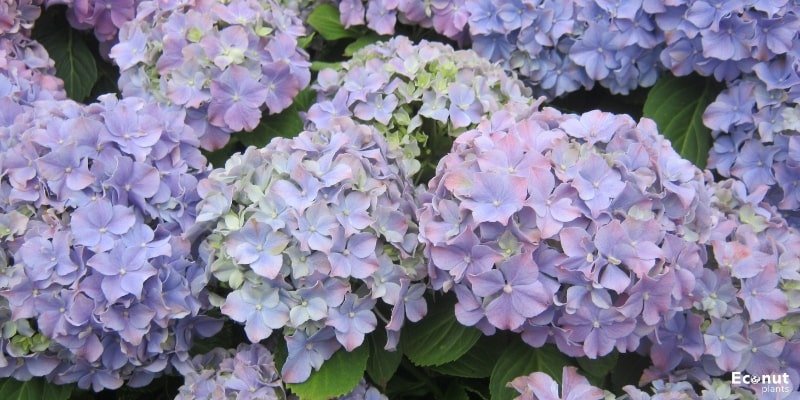
This hydrangea doesn’t need to be pruned and is simple to grow! From midsummer to early autumn, “Rhythmic Blue” will blossom with rich blue flowers. Similar to the Endless Summer line, this hydrangea variety also reblooms. Both new and aged wood will produce blooms, providing you with fresh flowers for months.
With a potential height of four feet, this mounded shrub would make a truly lovely addition to a perennial garden. “Rhythmic Blue” is lovely and hardy from zones 5 to 9, having been specifically developed to resist the harsh winters of the Midwest.
7. Penny Mac
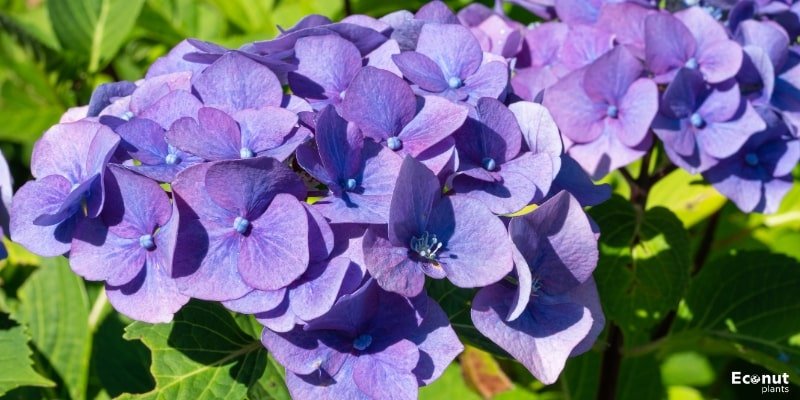
“Penny Mac” is a fantastic option if you detest the labor-intensive nature of maintaining hydrangeas. It grows swiftly, reaching four feet in width and six feet in height. Giant blue mophead blossoms cover this hydrangea and last all summer.
Given that it is hardy in zones 5 through 9, this is a weather-tolerant choice. Because of its low maintenance requirements and ease of care, this variety has grown fairly popular.
8. Early Blue
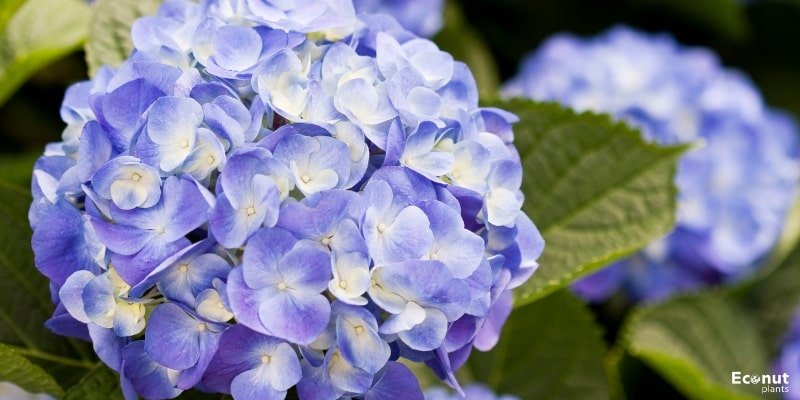
“Early Blue” is the name of a more compact, smaller version that is ideal for container gardens. Compared to other cultivars, they bloom for longer periods and are easier to grow and care for.
Because of their small stature, they make great border or edge plants in your garden. Until the first frost, they can blossom, depending on your hardiness zone. They are hardy in zones 5 through 9 and can survive with very little maintenance.
9. Nantucket Blue
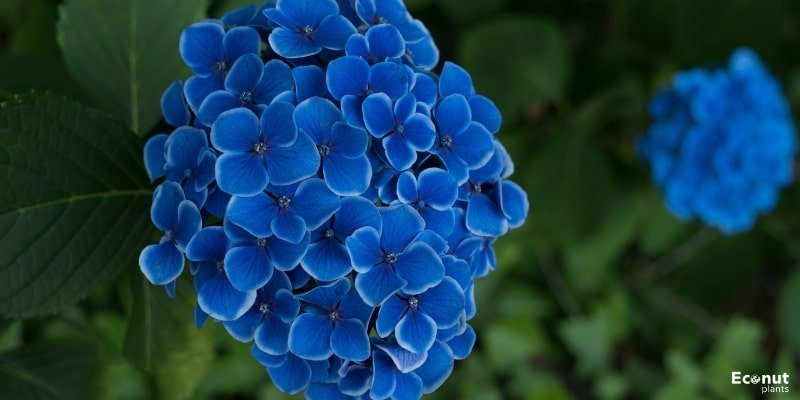
This mophead hydrangea is adorned with stunning marine blue blooms. Its variety name is no coincidence—this is a favourite by the sea that is often seen adorning Nantucket’s iconic white picket fences.
Reblooming hydrangea ‘Nantucket Blue’ blooms on both old and fresh wood. With its attractive border, this hydrangea reaches a height of almost six feet. This is a fantastic choice if you want the gorgeous blue colour to stay blue, and it is hardy in zones 5–9.
10. Mathilda Gutges

This is a personal favourite of mine. The blossoms on “Mathilda” have a deep, almost purple-blue colour and occasionally a lighter blue center that gives them the impression of being tie-dyed. Early summer to early autumn is bloom time.
Growing to a height of three to six feet, this hydrangea is a good size for a hedge or foundation planting. Give your plant some partial sun. Since “Mathilda Gutges” flowers on old wood, cut it back as soon as the flowering season is over. Hardy in zones 5–9.
11. Hydrangea Serrata
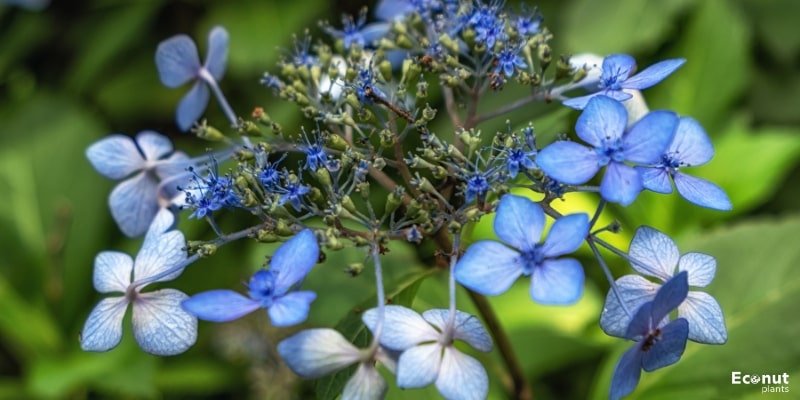
Hydrangea serrata is native to Korea and Japan. This kind of hydrangea is a great option for a little, delicate shrub that may also be used as a perennial hedgerow addition. They can tolerate colder temperatures and grow to a height of around two feet.
Even though many gardeners don’t think of these hydrangeas as “traditional” hydrangeas, they nonetheless look fantastic and provide a wide range of options for bringing a pop of blue colour into your landscape.
12. Color Changing
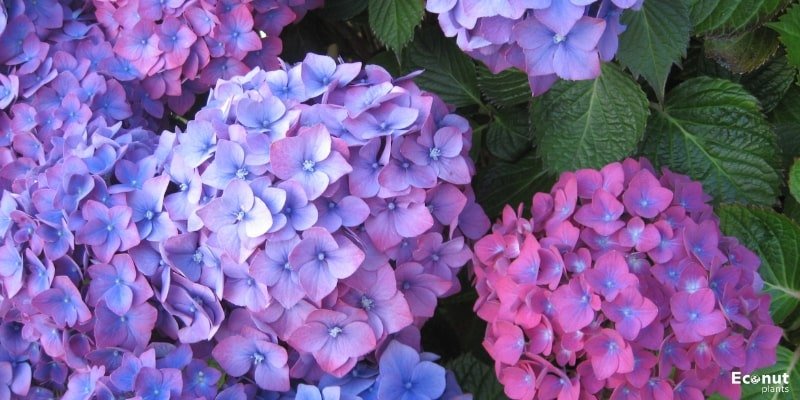
Bigleaf hydrangea, or Hydrangea macrophylla, and partially H. serrata will respond to the pH and aluminum content of your soil. By enabling the hydrangea to absorb more aluminum, more acidic soils—pH levels below 5.5—will promote blue blossoms.
For optimal safety, dilute the aluminum solution by adding one tablespoon to one gallon of water. In case the plant is parched, give it some water before using this mixture. Only two times a year, in April and May, should this procedure be used.
Conclusion
If you want blue blooms for your yard, any one of these hydrangeas will do. To add a lovely, delicate touch to your plants, choose a lace cap type or a mophead variety for a big, dramatic statement. You can mix and match as long as you can fulfill their care requirements! You can’t go wrong either way!

